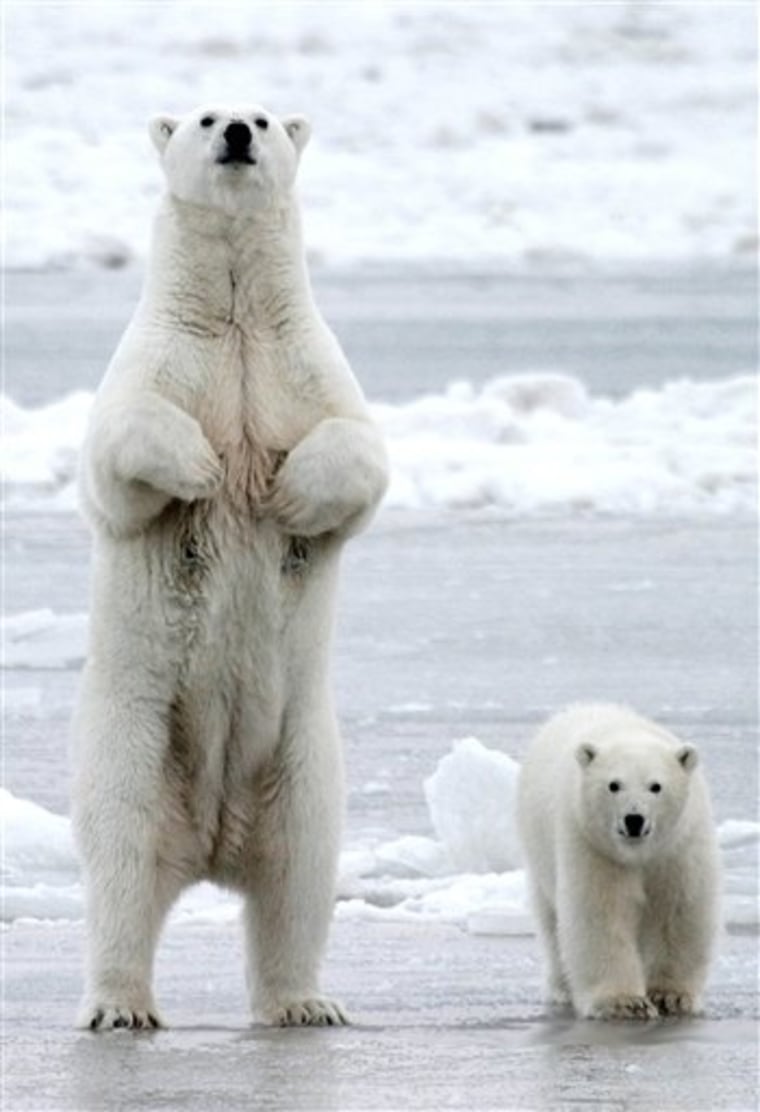In a move hailed by environmentalists, the Bush administration announced it will review whether polar bears should be considered a threatened species given indicators that their icy habitats are melting away due to global warming.
In a statement Wednesday, the U.S. Fish and Wildlife Service said protection “may be warranted” under the Endangered Species Act, and began a review process to consider if the bears should be listed.
The agency will seek information about population distribution, habitat, effects of climate change on the bears and their prey, potential threats from development, contaminants and poaching during the next 60 days before making a decision on whether to list the bears.
The decision comes after the Center for Biological Diversity filed a petition last year that said polar bears could become extinct by the end of the century because their sea ice habitat is melting.
The wildlife service said that the petition “presents substantial scientific and commercial information indicating that listing the polar bear may be warranted.”
The group, joined by the Natural Resources Defense Council and Greenpeace, also filed a federal lawsuit in December to seek federal protections for the polar bear.
“I think it’s a very important acknowledgment that global warming is transforming the Arctic and threatening polar bears with extinction,” said Kassie Siegel, lead author of the center’s petition.
‘More thorough analysis’ needed
Fish and Wildlife Service spokesman Bruce Woods said the petition “contains sufficient information to convince us that we need to do a more thorough analysis of the polar bear population worldwide.”
Polar bears under U.S. jurisdiction are found only in Alaska. They spend most of their lives on sea ice, but the center said if current rates of decline in sea ice continue, the summertime Arctic could be completely ice-free well before the end of the century.
There is some disagreement about whether polar bears are actually being threatened. Federal wildlife officials report healthy populations of polar bears, and are working on a hard population count.
However, the University of Colorado’s National Snow and Ice Data Center, NASA and the University of Washington said last fall that there was a “stunning reduction in Arctic sea ice at the end of the northern summer.”
Potential impact on industries
If the polar bear were listed as a threatened species, federal regulatory agencies would be required to consider how their decisions affect polar bears. A listing could affect industries seeking permission to release greenhouse gases or decisions such as setting fuel economy standards for vehicles, Siegel said.
The center concluded that if current rates of decline in sea ice continue, the summertime Arctic could be completely ice-free well before the end of the century.
Siegel hailed the decision Tuesday as an important precedent on the science of global warming. If the polar bear ultimately is listed as threatened, it will make a strong statement that the effects of climate change are no longer uncertain.
"We don't have uncertainty in the science any more. That's a precedent we need for federal decision-making," she said.
Initial response was delayed
The center filed its petition in February 2005. Under the Endangered Species Act, the Fish and Wildlife Service was supposed to render its initial finding of the merits within 90 days, but the federal agency responded after a year.
"We didn't have the money to do the finding," Woods said. The agency had to wait until budget money was available in the fiscal year 2006 budget and acted when it was available, he said.
When the agency had not acted by December, the center as well as the Natural Resources Defense Council and Greenpeace sued in federal court to protect polar bears.
In the United States, only Alaska has polar bears. The U.S. population is estimated at between 2,000-5,000 bears. Arctic-wide estimates are between 21,000 and 28,000 bears.
